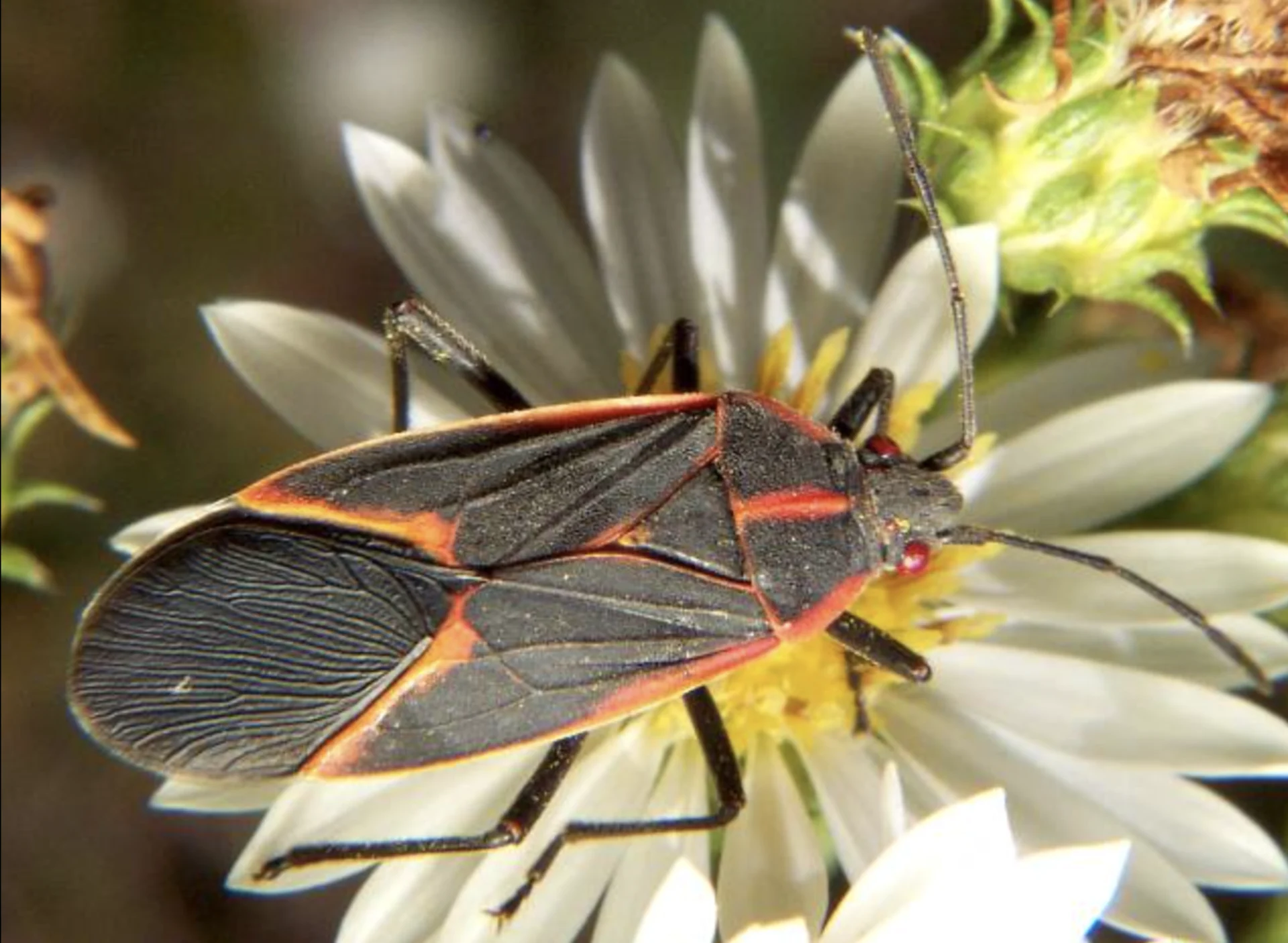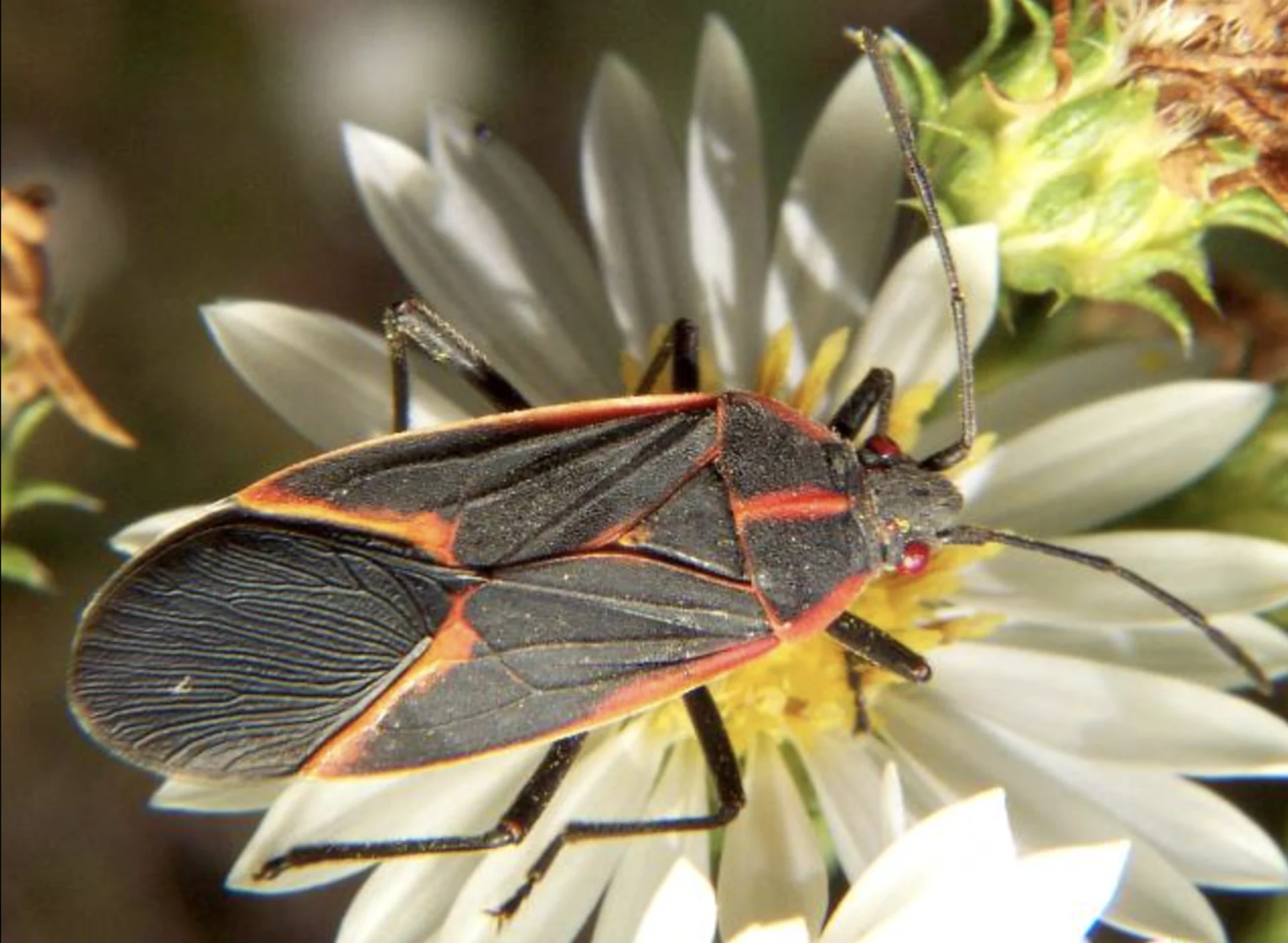
Have you seen the boxelder bug around your home? Relax, it's mostly harmless
They like to hang out in groups - that's the main issue with this type of bug.
Some uninvited houseguests, like mice, need to be dealt with promptly due to their ability to spread disease.
Others are relatively harmless.
That's the type of pest we're talking about today. Identified by red and black markings and a flat body, it is none other than the boxelder bug.
Here's the good news: boxelders don't bite or sting, and they don't spread disease. They won't eat away at your home, like some species of ants or termites might, and they aren't going to attack your plants.
SEE ALSO: How to keep the mice out when the season changes
But they can be unsightly and a little messy. They like to hang out in groups, clumping together near windows and doors and excreting in a manner that could leave behind stains.
But be careful when getting rid of them, because you could find yourself on the receiving end of an unwanted surprise.
"You really should try and stay away from them if you can or avoid touching them because they can smell. They have a bad smell that keeps predators away, and that includes us but also birds and small mammals that would eat them," Sandy Smith, Ph.D. tells The Weather Network.
Sandy is the director of forest programs at The University of Toronto and runs a lab focusing on forest health, tracking changes of insect and insect and insect and plant interactions over time.
One component of her lab involves invasive species monitoring.
So, do boxelders fall into this category?
Not really.
"I wouldn't call them invasive, but invasive is really a very subjective term because it doesn't define whether they've always been here [in Canada] or not. 'Invasive' is whether they are taking over a space. If you're a homeowner with boxelders, I bet you feel like they're taking over your space."
But in broader terms: boxelders are considered a 'native' species common in eastern portions of Canada and the U.S.
"They aren't really pests unless you don't like bugs," Sandy says, "and then of course they are an incredible nuisance for you."

Adult Box Elder Bug. Credit: Bruce Marlin/Wikipedia. CC BY-SA 2.5.
SEE ALSO: Centipedes...they bite, but don't kill them. Here's why
Boxelders feed on the seeds of - you guessed it - boxelder trees, and the seeds can still be found on trees in the fall.
Like all things, boxelder populations go through cycles. Mild winters mean adults are more likely to lay more eggs, and a warm, dry spring can lead to lots of seeds to feed one. These two factors can contribute to a population boom and heighten the risk of a boxelder party in your home come fall.
If you see them inside it's likely because you left a door or window open, or there's a crack somewhere they can sneak in through. This species won't chew its way in.
"They're just looking for a place to shelter against the really cold days in January and February," Sandy says.
So - they're harmless and they aren't destructive - OK, fine. But what if you want them out of your home?
"In the fall, they're slower-moving," Sandy says.
"You can sweep them up and try and throw them away. The garbage or the compost would probably be the most appropriate place for these guys."











